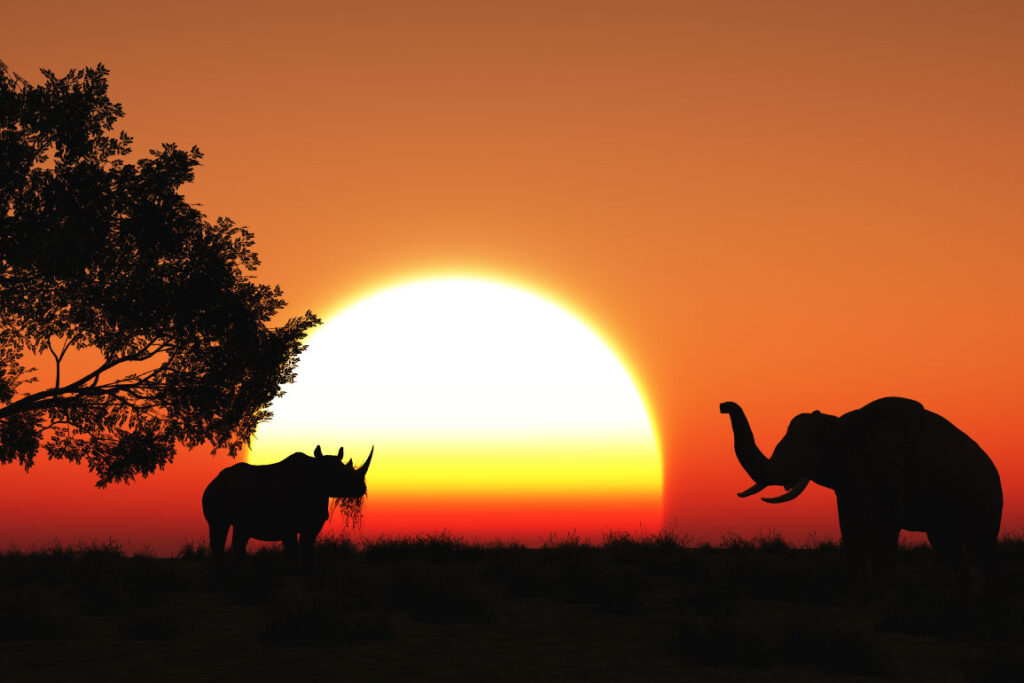
Planning your dream African safari is an exciting endeavor, but the diverse geography and climate of the continent mean that timing your trip appropriately is crucial. From the heat and humidity of the equatorial regions to the cooler climates of the southern nations, each region and country has its own optimal safari season.
Africa Wellness Safaris enhances your African safari experience by combining exceptional wildlife encounters with a focus on your well-being. To help you make the most of your African safari adventure, we’ve compiled some tips on when to visit various regions across the continent.
East Africa, home to Kenya and Tanzania, offers year-round safari opportunities thanks to its equatorial climate. That said, the dry season from June to October is often considered the best time to visit. The lack of rain means that animals gather around water sources, making them easier to spot. It’s also when the legendary Great Wildebeest Migration occurs, with over a million wildebeest, zebras, and gazelles moving across the Serengeti plains and the Maasai Mara.
However, the ‘short rains’ period in November and the ‘long rains’ from late March to May can also provide excellent wildlife viewing, with fewer tourists, lower rates, and the dramatic spectacle of newborn animals and vibrant birdlife.
In contrast, Southern Africa, which includes destinations like South Africa, Botswana, and Namibia, has a more pronounced seasonal variation. The region’s dry season, from May to October, is considered the best time for a safari. As water sources dwindle, wildlife congregates around rivers and waterholes, making them easier to spot. The weather during this time is also cooler and more comfortable.
Central Africa, particularly Uganda and Rwanda, is famous for mountain gorilla trekking. While it’s possible to trek year-round, the best times are during the dry seasons from December to February and June to September. During these periods, the paths are less muddy, and the chances of a clear sky are higher.
In West Africa, countries like Ghana and Senegal have bird watching as a significant attraction. The dry season from November to March is when migratory birds from Europe flock here, making it an excellent time for bird lovers.
While wildlife viewing is the main allure of an African safari, it’s not the only factor to consider when planning your trip. For example, if you’re an avid bird-watcher, the wet season often brings a profusion of migratory bird species, making it an ideal time for birding safaris.
Additionally, consider your comfort levels. Some travelers may find the African summer, especially in southern and western regions, too hot for comfort. Lastly, traveling during the shoulder seasons (just before or after peak seasons) can be a smart way to avoid crowds and potentially get better rates.
Ultimately, your journey’s timing depends on your aspirations and desires. With each season offering distinct wildlife encounters and unique advantages, a well-timed safari tailored to your preferences is sure to be an unforgettable adventure. So, prepare for an experience that will not only leave you captivated by Africa’s wild beauty but also uplifted and rejuvenated, courtesy of Africa Wellness Safaris. Get ready to capture breathtaking moments, connect with nature, and embark on an expedition that will stay with you forever.